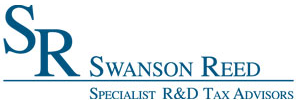Should the United States Enact a Patent Box?
Should the United States Enact a Patent Box?
Swanson Reed has recently written an article for the Tax Advisor outlining the facts surrounding the U.S enacting a Patent Box.
Many countries have enacted patent box systems as they attract innovation by reducing the tax rate on income from intellectual property assets, whilst maintaining economic advantage and enable countries to compete with low-tax jurisdictions.
What exactly is a patent box?
A patent box is a preferential tax system that allows companies to elect a reduced rate of corporate tax on income derived from qualifying IP assets. The economic theory behind this is based primarily on two factors: market failure and increasing global tax competition. Patent boxes reduce the cost of this spillover by increasing the potential profit of innovating, and thus they increase the incentive to develop new products.
As such, a patent box complements R&D tax credit systems by creating tax incentives to spur the commercialization of research outcomes. As stated in a 2013 Organization for Economic Co-operation and Development (OECD) report, “International cooperation should extend . . . to . . . statutory policies for supporting R&D through tax credits and patent boxes.”
Should the U.S enact a Patent Box?
Despite seeing more companies move assets to these other tax jurisdictions, the United States has not yet enacted a patent box system. However, a patent box has been considered in the United States previously when the Treasury first formally considered the concept in 2007 following reports that American multinational corporations had greater incentive to exploit a patent overseas.
The Manufacturing Innovation in America Act of 2012 (and another attempt in 2013) was introduced to amend the Code to allow a taxpayer to elect to deduct the lesser of 71% of the patent box profit or taxable income for the tax year. However, the legislation failed to gain traction.
Moreover, in July 2015 Sens. Rob Portman, R-Ohio, and Chuck Schumer, D-N.Y., drafted legislation to provide a tax concession on intellectual property. They proposed an “innovation box”, which would cover cover patents, inventions, formulas, processes, designs, patterns, know-how, motion picture films or videotapes, and computer software. Furthermore, the proposal would also allow companies to bring overseas IP back into the United States, tax free.
A 2010 study found that the introduction of patent boxes in the Benelux countries (Belgium, Netherlands, Luxembourg) led to significant shifts in patent holdings toward those countries and away from other countries, and in the United Kingdom, patent registrations by German companies went up 27%. Furthermore, the patent box has appeared to be very successful in attracting economic activity in the United Kingdom.
The United States is considering following in its European cousins’ footsteps by introducing a patent box regime to make its tax system more competitive, incentivize domestic innovation and R&D, and create jobs. The idea of a U.S. patent box is not new, however, unlike when previous attempts were made, the current economic climate, and indications from the 2016 U.S. budget, are adding traction to the movement toward comprehensive tax reform.
Should the United States patent box be designed carefully and effectively, it could serve as a powerful complementary tool to existing R&D credits that curbs tax avoidance, boosts the commercialization of research outcomes, and bolsters domestic innovation.
Read the full article here for more information
If you have questions regarding this article please Contact Us

















